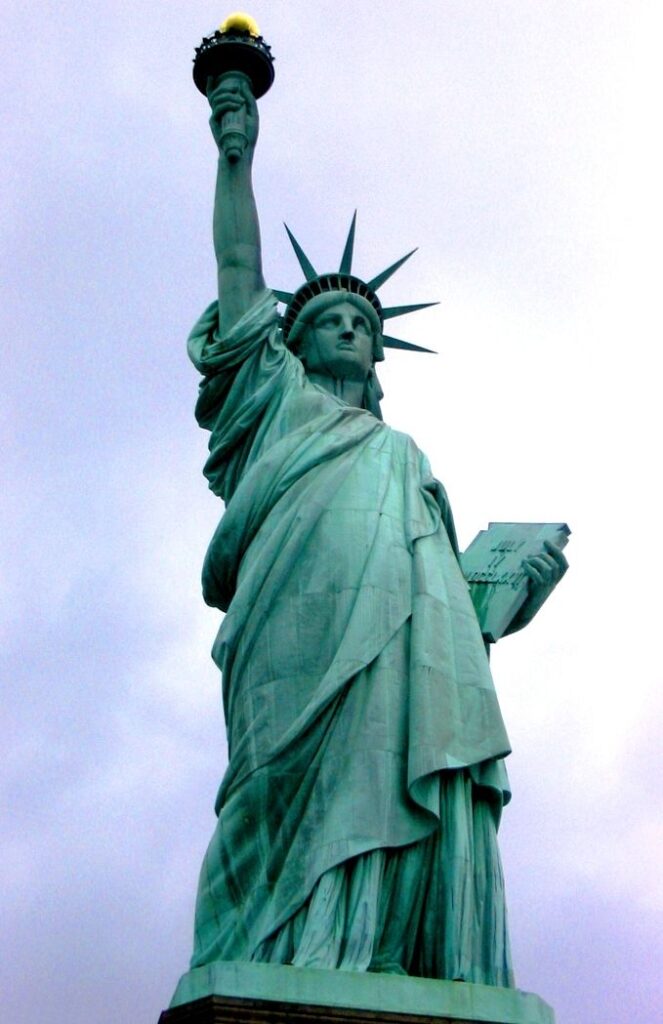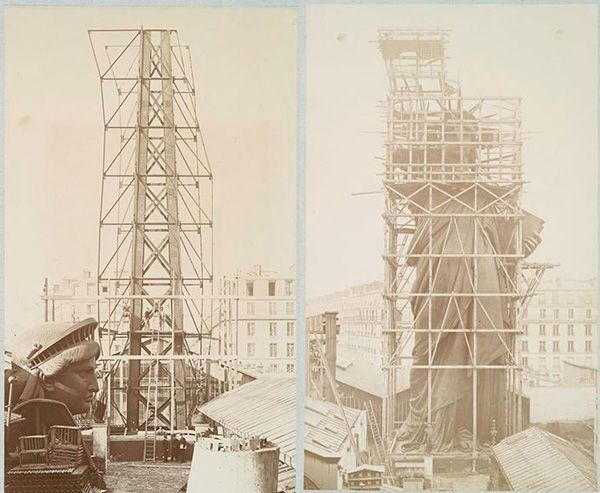Frédéric Augusthe Bartholdi (2 august 1834 – 4 october 1904) was a French sculptor and painter. The work for which Bartholdi is most famous is ‘Liberty Enlightening the World’, better known as the Statue of Liberty.
The Statue of Liberty
The statue is 46m high, and the top of the torch is at an elevation of 93m from mean low-water mark. It was the largest sculptural work of its kind that had been completed up to that time.

Photo: Carlos Cunha Filho; cropped by Beyond My Ken (talk) 09:08, 18 January 2011 (UTC) from Around The World
In 1880, Bartholdi was able to obtain the services of the innovative designer and builder Gustave Eiffel. Eiffel and his Swiss structural engineer, Maurice Koechlin, decided to build an iron truss tower. Eiffel opted not to use a completely rigid structure, which would force stresses to accumulate in the skin and lead eventually to cracking.

Photo: Daniel Schwen
A secondary skeleton was attached to the center pylon, then, to enable the statue to move slightly in the winds of New York Harbor. As the metal expanded on hot summer days, he loosely connected the support structure to the skin using flat iron bars which culminated in a mesh of metal straps, known as “saddles”, that were riveted to the skin, providing firm support.

Photo: unknown artists on Leslie’s staff
Eiffel’s design made the statue one of the earliest examples of curtain wall construction, in which the exterior of the structure is not load bearing, but is instead supported by an interior framework.

Photo: Albert Fernique
He included two interior spiral staircases, to make it easier for visitors to reach the observation point in the crown. Access to an observation platform surrounding the torch was also provided, but the narrowness of the arm allowed for only a single ladder. The components of the pylon tower were built in the Eiffel factory.

Source: https://dogfoose.com/2012/02/inside-the-statue-of-liberty/
The change in structural material from masonry to iron allowed Bartholdi to build the statue in France and have it disassembled and transported to the United States for reassembly in place on Bedloe’s Island. On 28 October 1886, the structure was officially presented as the joint gift of the French and American people, and installed on Bedloe’s Island in New York Harbor.
About the Author:

Bruno Dursin – Managing Director at Believe in Steel. Bruno has more than 30 years of experience in promoting steel & steel solutions. His clients benefit from his extensive network within the building industry.



